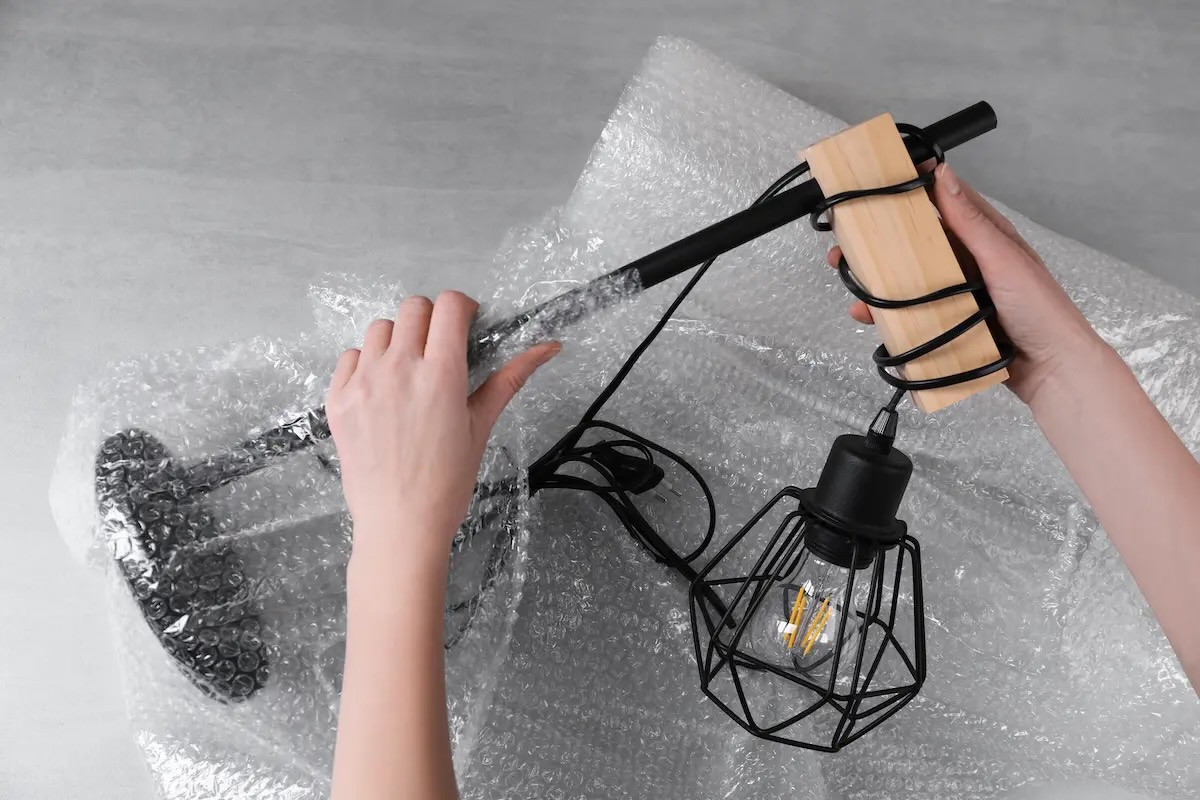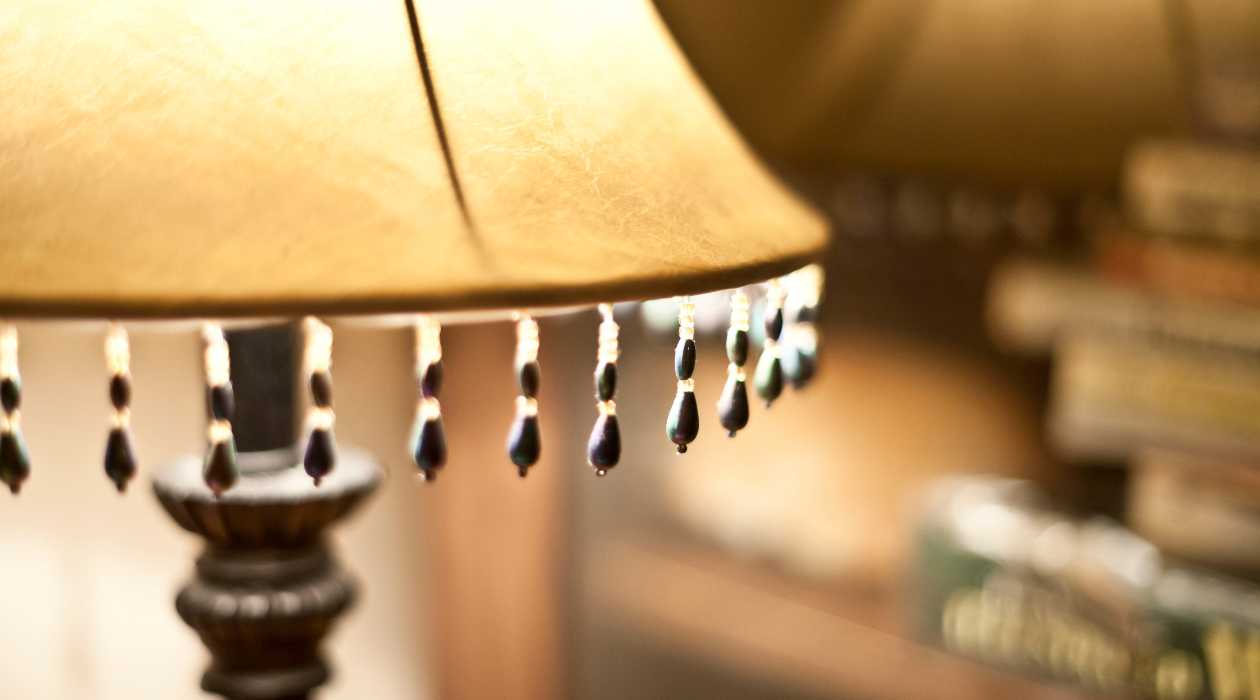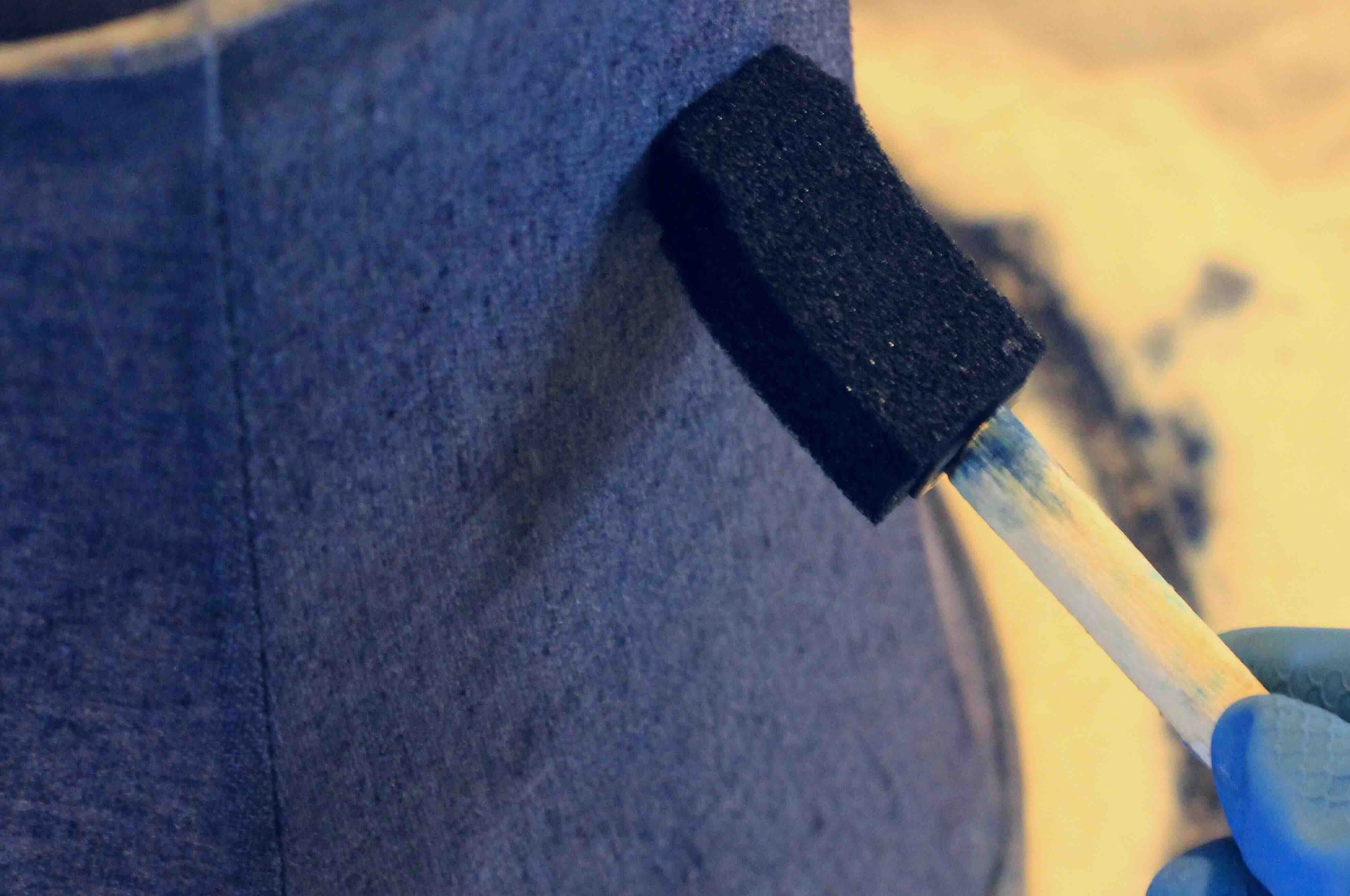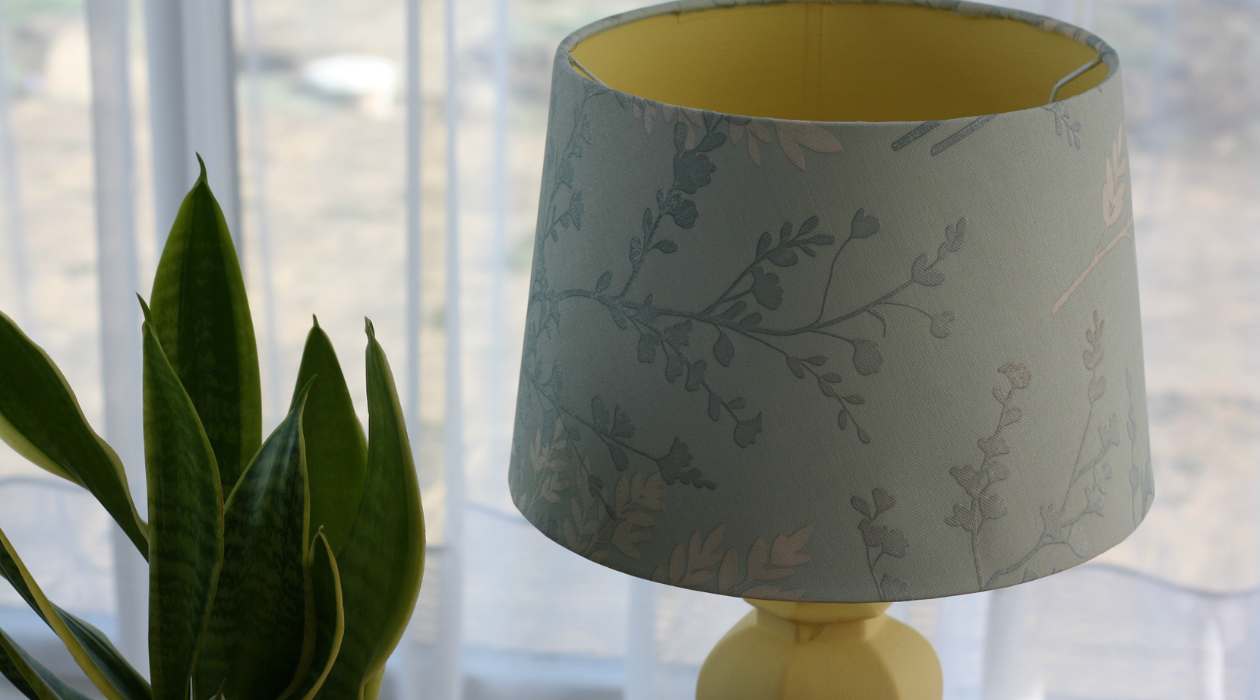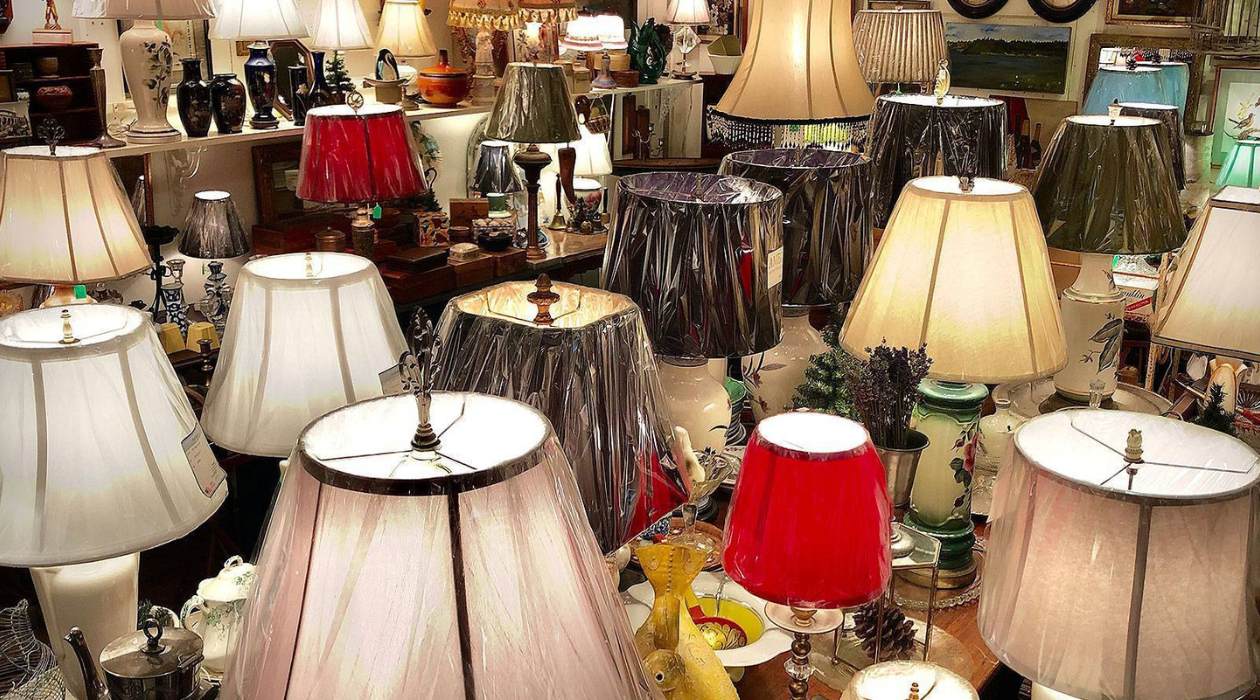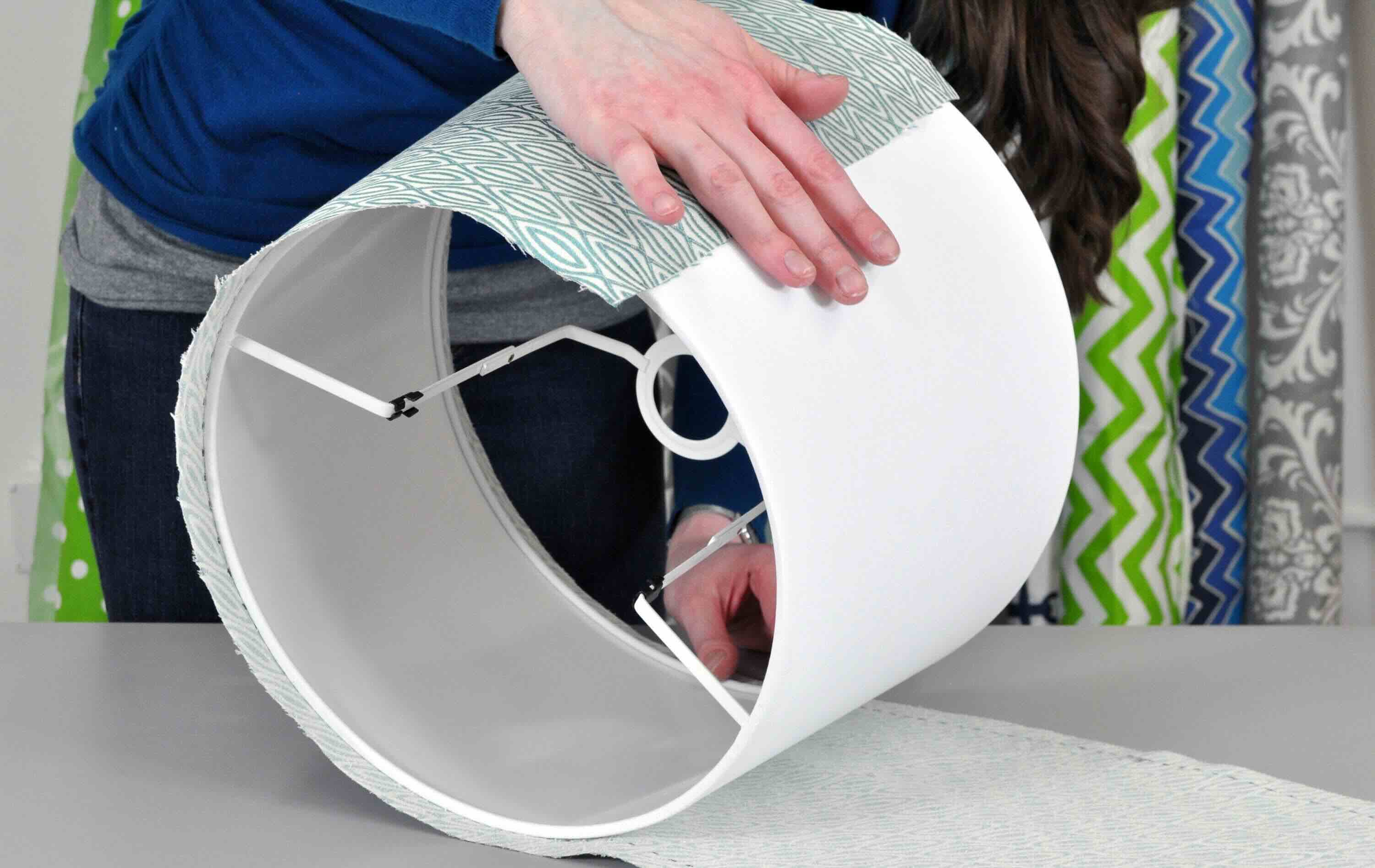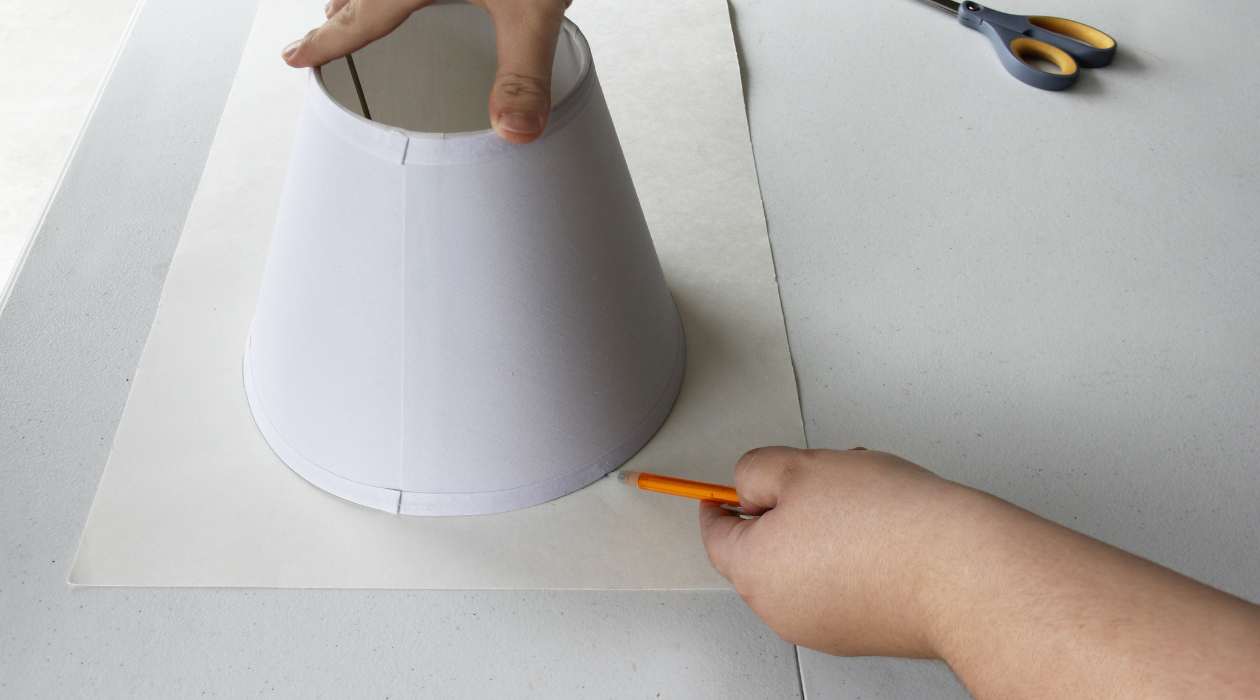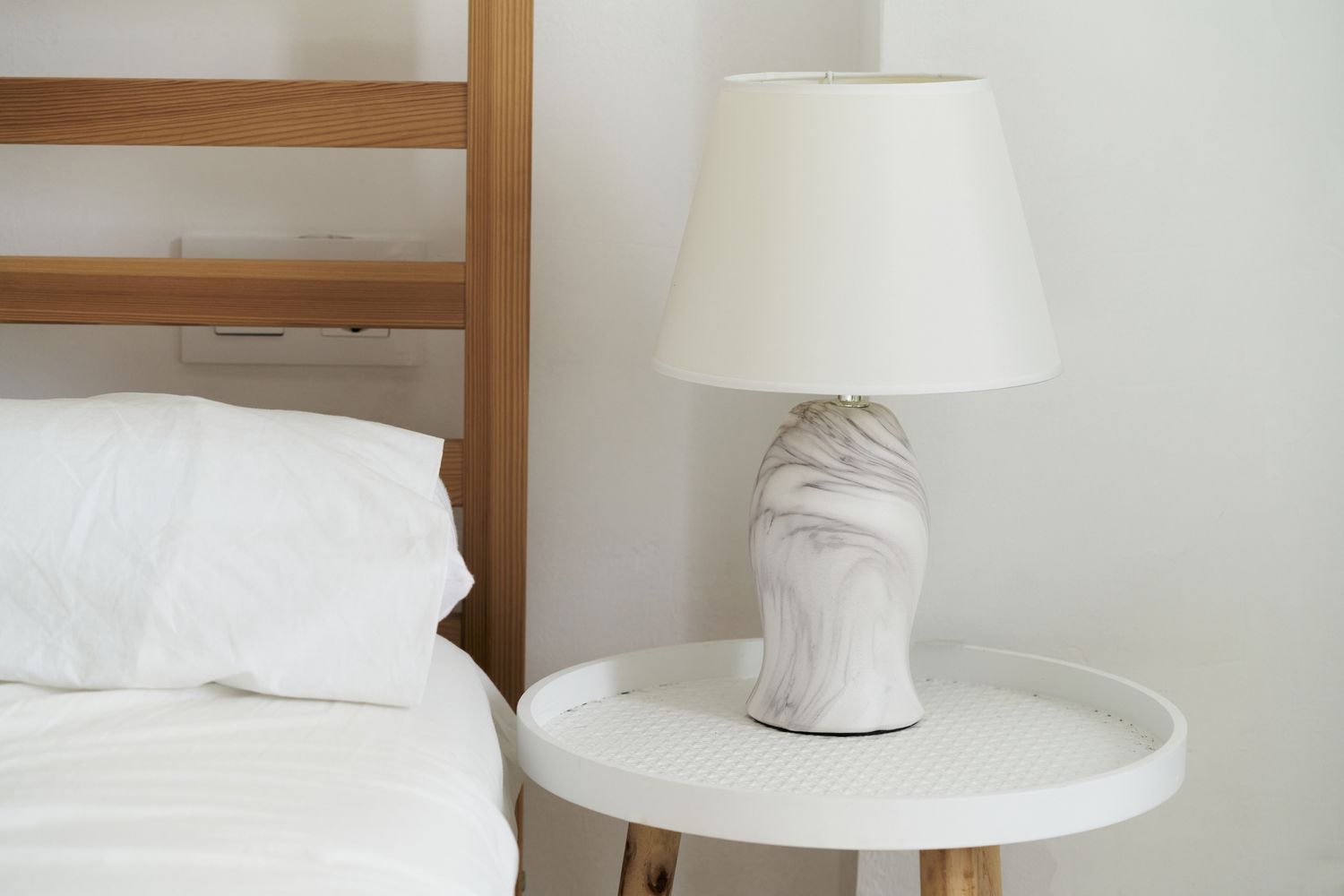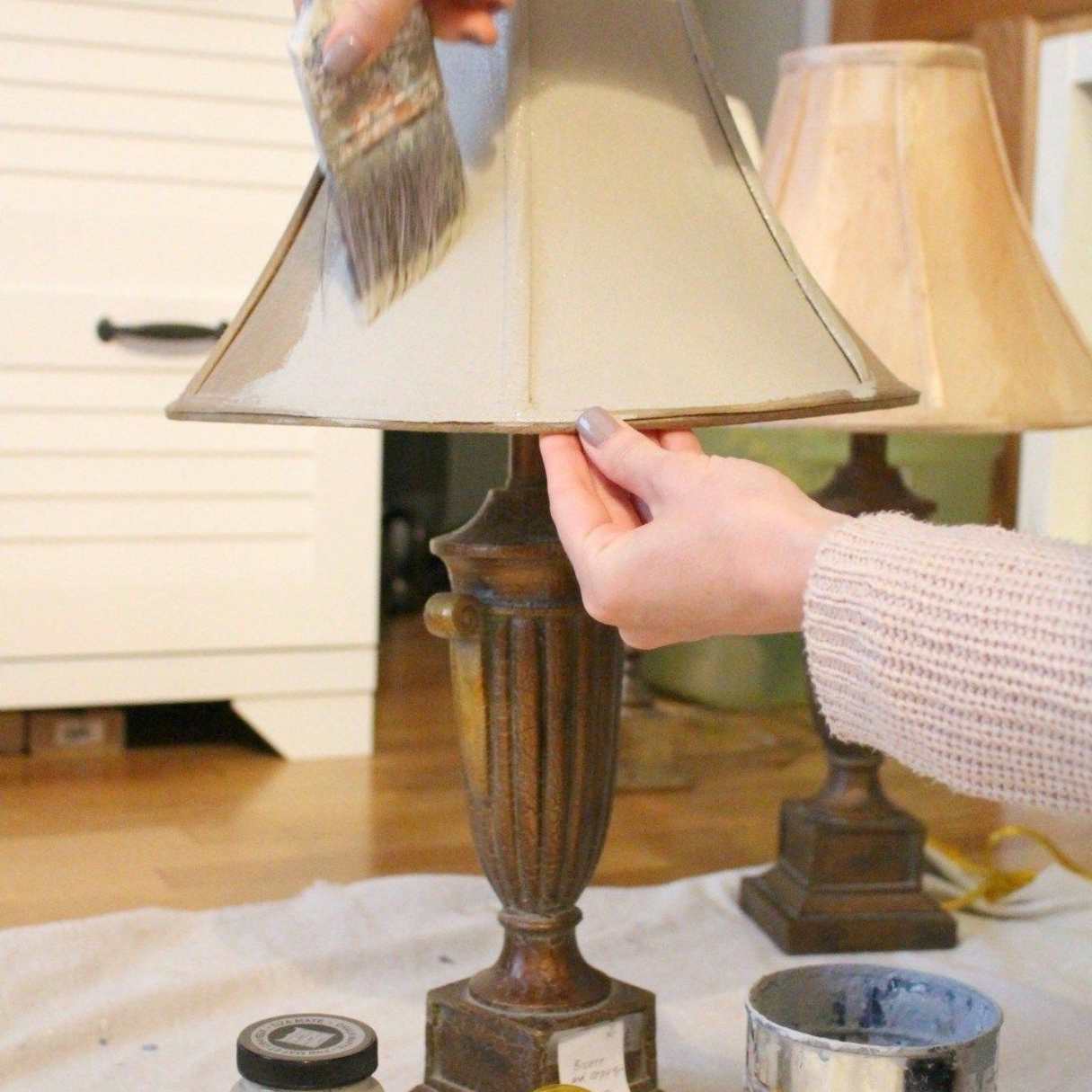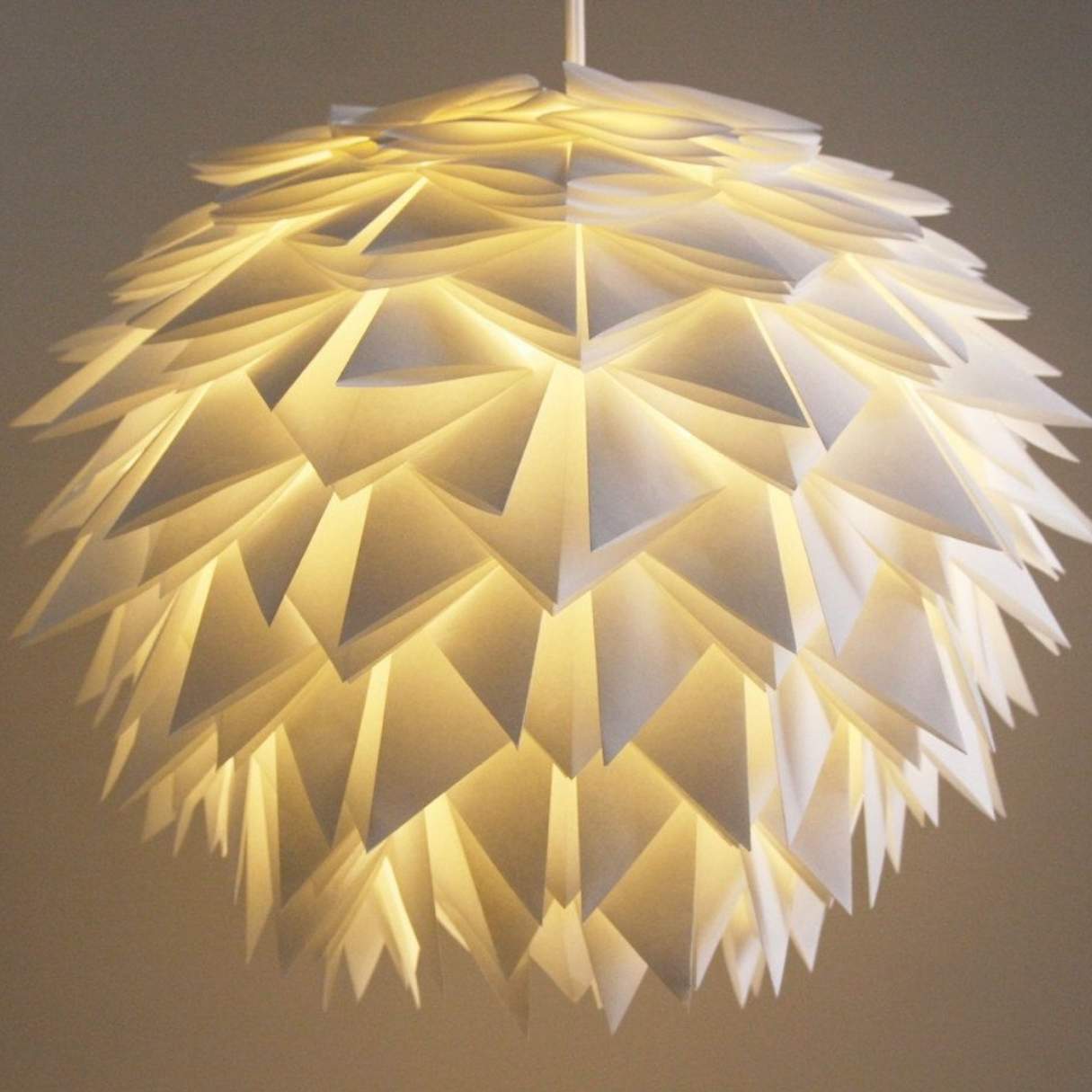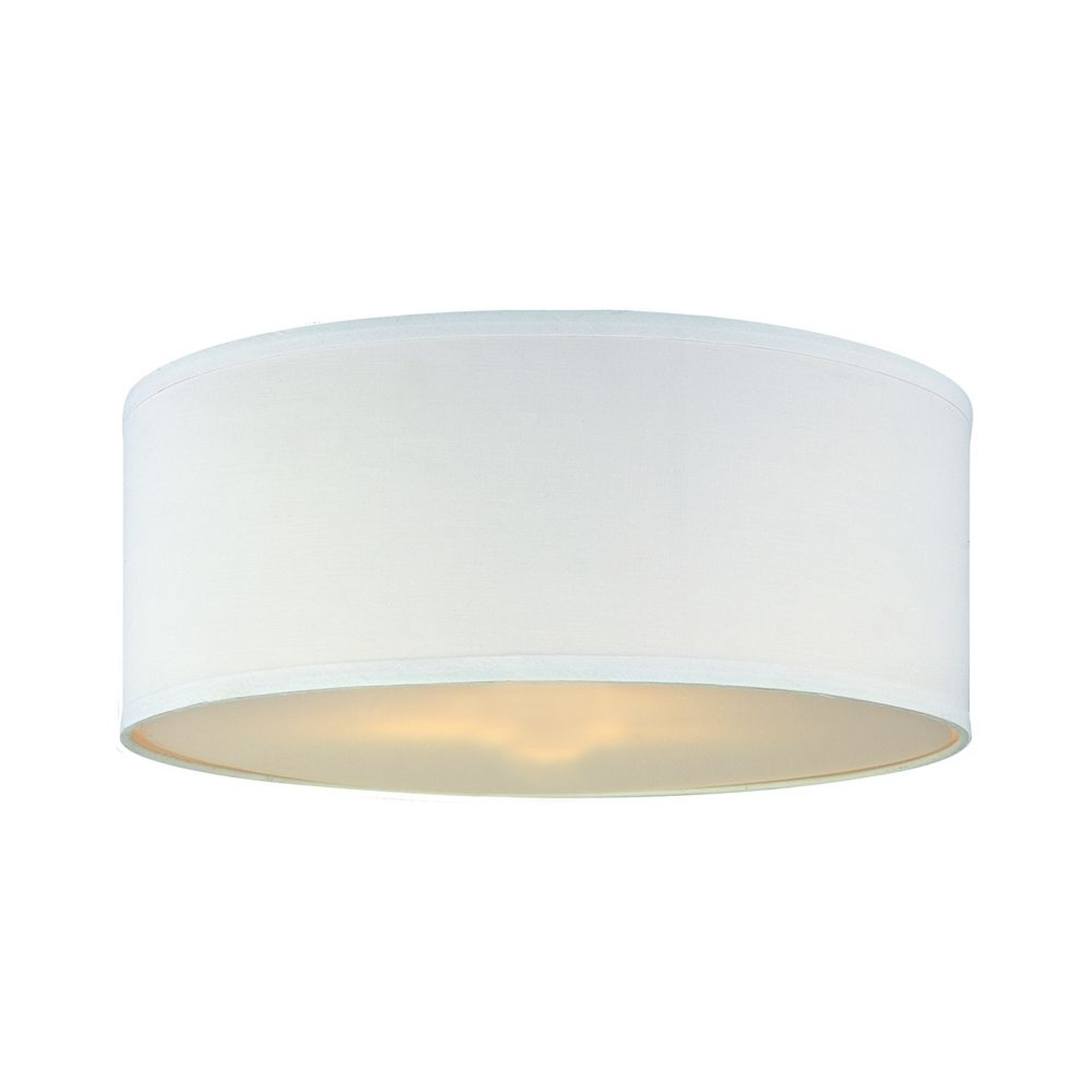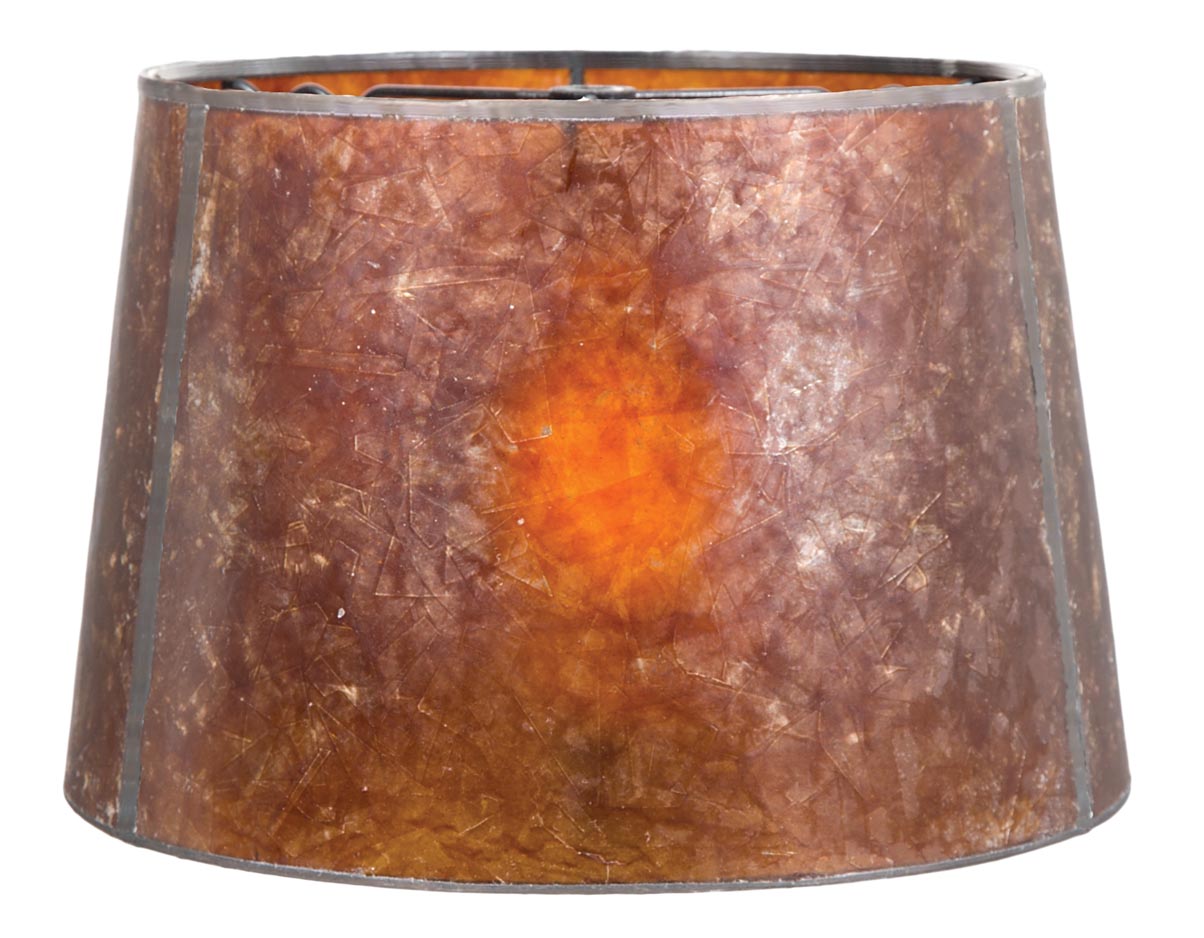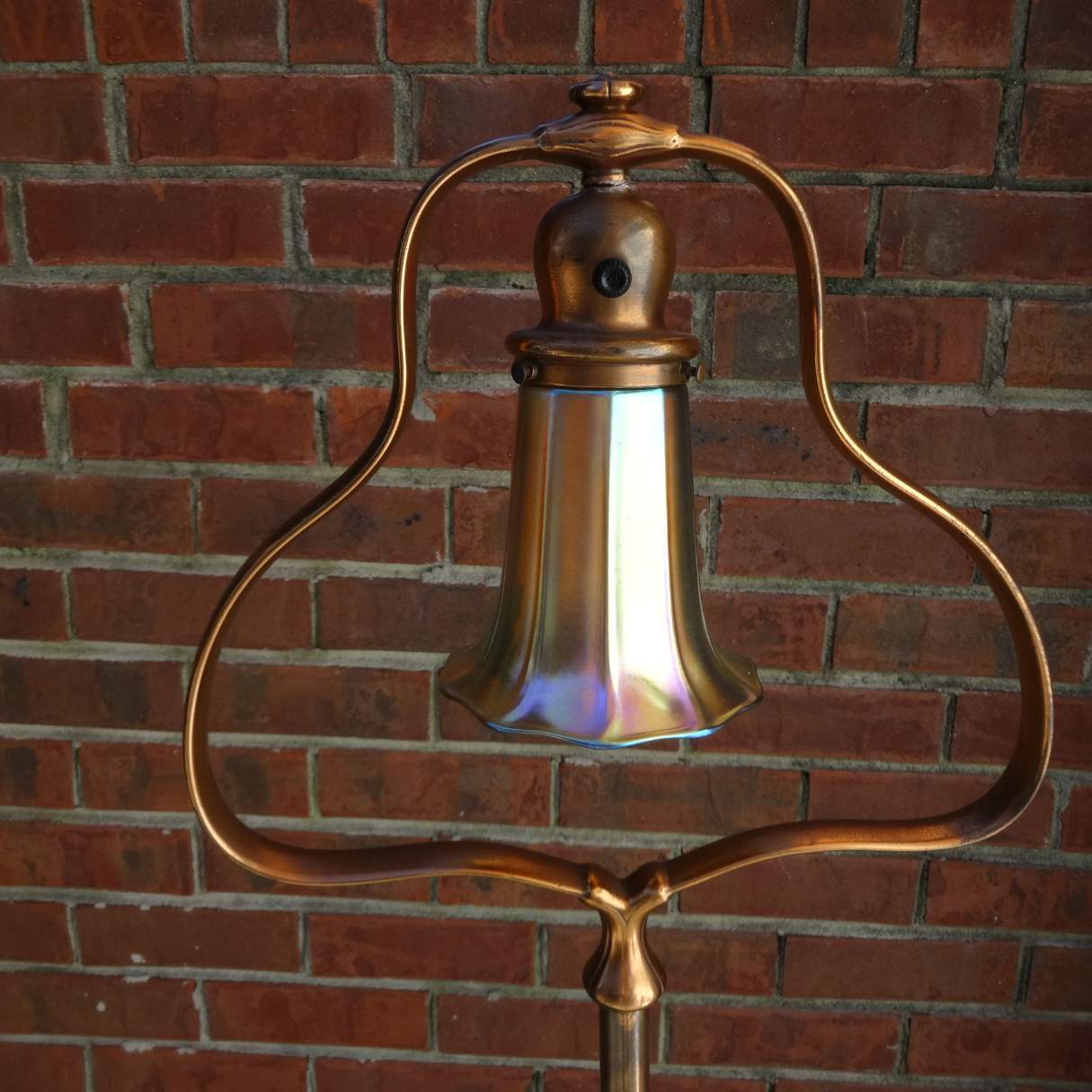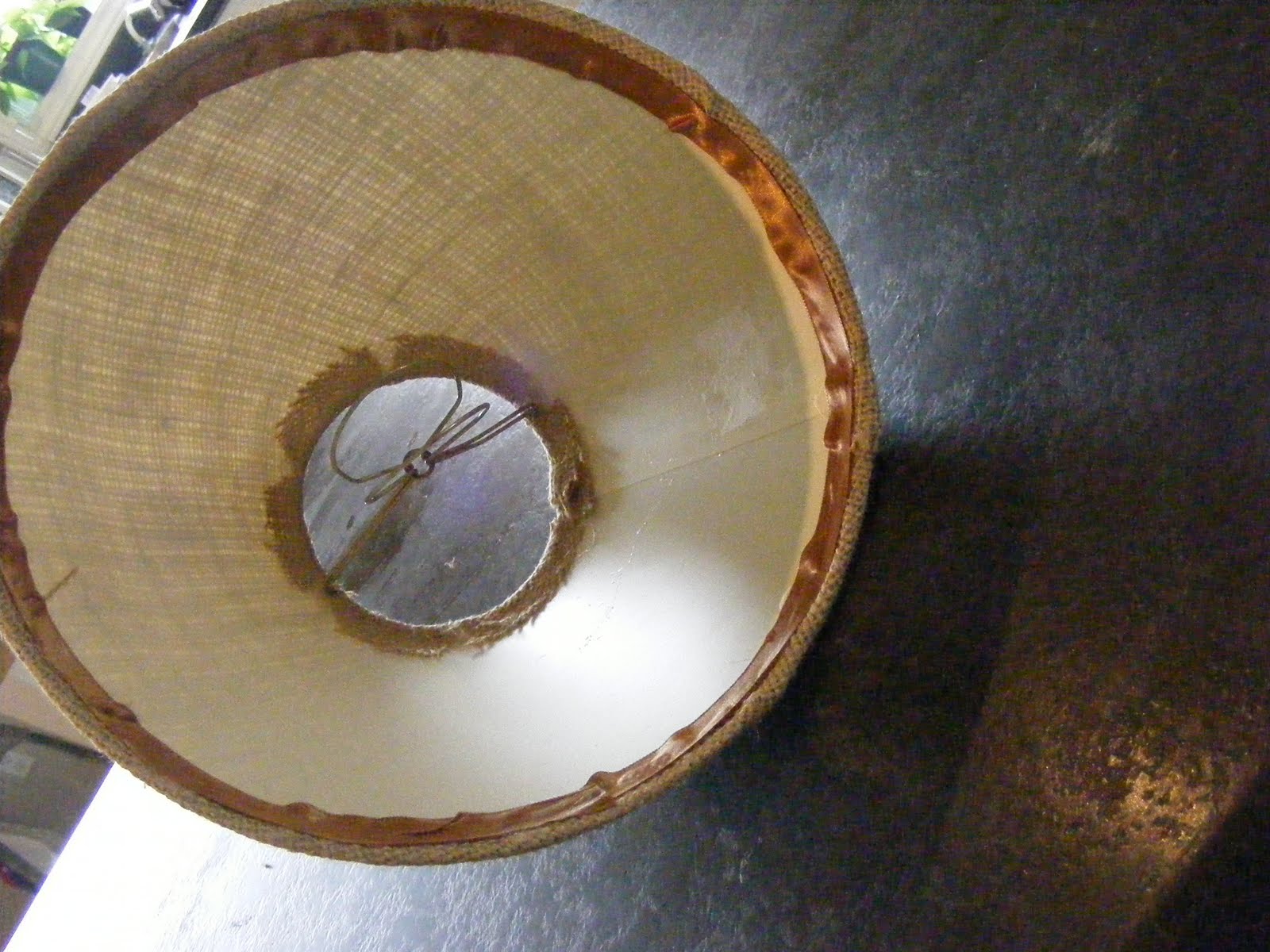

Furniture
How To Fix A Lamp Shade
Modified: January 3, 2024
Discover how to easily fix a lamp shade and bring new life to your furniture. Learn step-by-step techniques from expert furniture repair guides.
(Many of the links in this article redirect to a specific reviewed product. Your purchase of these products through affiliate links helps to generate commission for Storables.com, at no extra cost. Learn more)
Introduction
Have you ever noticed that a worn-out or damaged lamp shade can greatly diminish the appeal of your favorite lamp? A beautiful lamp shade not only adds style and ambiance to a room but also protects your eyes from harsh direct light. But what happens when your lamp shade starts to show signs of wear and tear? Don’t fret! With a little bit of know-how and some basic tools, you can easily fix a lamp shade and restore its beauty.
In this article, we will guide you through a step-by-step process to fix a lamp shade and bring it back to life. Whether your lamp shade is ripped, dented, or faded, we will show you how to assess the issue, gather the necessary tools and materials, repair and replace damaged parts, and reassemble the lamp. By the end of this article, you’ll have all the knowledge and confidence to tackle any lamp shade repair project.
Before we dive into the steps, it’s important to note that the techniques we’ll discuss can be applied to a wide range of lamp shade styles, including fabric, paper, glass, or metal. However, it’s essential to consider the material of your lamp shade to ensure the repairs are appropriate and safe. With that in mind, let’s get started on fixing your lamp shade!
Key Takeaways:
- Transform worn-out lamp shades into stunning pieces with simple tools and creativity, saving money and reducing waste while adding charm and ambiance to your space.
- By following step-by-step lamp shade repair, unleash your creativity, save money, and contribute to sustainability while reviving the beauty of your favorite lamp.
Read more: How To Fix A Wobbly Lamp Shade
Step 1: Assess and Identify the Issue
The first step in fixing a lamp shade is to carefully assess and identify the issue. Take a close look at your lamp shade and note any visible signs of damage or wear. This could include tears, stains, dents, fading, or loose parts.
Next, determine the severity of the issue. Is it a minor fix that can be done with a few simple repairs, or is it more complicated and requires replacement parts? Understanding the extent of the damage will help you determine the necessary steps to fix the lamp shade.
If you notice any tears or holes in a fabric or paper lamp shade, consider whether it can be repaired by patching or sewing. Smaller tears may be fixed with adhesive or fabric glue, while larger tears may require a patch of matching fabric. For dents or bends in metal or plastic lamp shades, you may need to gently reshape them using your hands or pliers.
It’s also important to inspect the lamp shade frame or structure. Look for any loose or broken parts that may need to be repaired or replaced. Check the electrical components of the lamp as well, ensuring that the wiring is intact and functioning properly.
By thoroughly assessing and identifying the issue, you’ll have a better understanding of what needs to be done to fix your lamp shade. Once you’ve identified the problem areas, it’s time to gather the necessary tools and materials for the repairs.
Step 2: Gather Necessary Tools and Materials
Before you begin repairing your lamp shade, it’s essential to gather all the necessary tools and materials. Having everything on hand will make the process much smoother and save you from any unnecessary trips to the store.
The tools and materials required may vary depending on the type of lamp shade and the extent of the damage. Here are some common items you might need:
- Screwdriver or Allen wrench: These tools will be needed to remove any screws or fasteners holding the lamp shade in place.
- Scissors or craft knife: These are essential for cutting and trimming fabric or paper lamp shades.
- Fabric glue or adhesive: If you’re working with a fabric or paper lamp shade, you may need glue or adhesive to repair tears or secure loose edges.
- Matchstick or toothpick: These can be useful for applying glue or adhesive to small and hard-to-reach areas.
- Patch material: If your lamp shade has a tear or hole, you may need a piece of matching fabric or paper to patch it up.
- Pliers: Pliers can be handy for reshaping metal or plastic lamp shades and tightening loose parts.
- Replacement parts: Depending on the severity of the damage, you may need to replace certain components, such as a new lamp shade frame, electrical socket, or wiring.
- Cleaning supplies: If your lamp shade is dirty or stained, you may need mild soap, water, and a soft cloth or sponge for cleaning.
Make sure to double-check the requirements for your specific lamp shade and gather any additional tools or materials needed. It’s always better to be well-prepared before starting any repair work.
Now that you have all the necessary tools and materials, you’re ready to move on to the next step: removing the lamp shade.
Step 3: Remove the Lamp Shade
Once you have gathered all the necessary tools and materials, it’s time to remove the lamp shade from the lamp base. This step is crucial to ensure easy access for repairs and to prevent any damage to the lamp or shade.
Follow these steps to safely remove the lamp shade:
- Turn off the lamp and unplug it from the power source. Safety should always be a priority when working with electrical appliances.
- If your lamp shade is secured with a harp, locate the finial on top of the harp. Unscrew the finial in a counterclockwise direction and set it aside.
- Gently lift the lamp shade off the harp or remove any other fastening mechanisms, such as clips or brackets holding the shade in place.
- If your lamp shade is a pendant or hanging style, locate the attachment point on the lamp base or ceiling. Follow the manufacturer’s instructions for removing the shade, which may involve loosening screws or disconnecting electrical connections.
- Place the lamp shade in a safe and clean area, away from potential hazards and spills.
By removing the lamp shade, you provide yourself with a clear workspace for repairs and prevent any accidental damage to the shade or the lamp base. Keep the removed shade in a safe place to avoid any further damage during the repair process.
Now that the lamp shade is safely removed, let’s move on to the next step: inspecting and repairing any damaged parts.
Step 4: Inspect and Repair any Damaged Parts
With the lamp shade successfully removed, it’s time to thoroughly inspect it for any damaged parts that need repair. This step is vital to ensure the longevity and functionality of your lamp shade.
Take the following steps to inspect and repair any damaged parts:
- Examine the fabric or material of the lamp shade for tears, stains, or discoloration. If there are any tears, use fabric glue or adhesive to carefully glue the edges together. For larger tears, you may need to apply a patch of matching fabric to reinforce the area.
- If the lamp shade frame is damaged, look for loose or broken wires, metal rods, or plastic components. Tighten any loose wires or screws using pliers or a screwdriver. If there are broken or missing parts, you may need to consider replacing the entire frame or the damaged components.
- For metal or plastic lamp shades with dents or bends, gently reshape them using your hands or pliers. Be careful not to put too much pressure, as this can cause further damage. Gradually work on the dented area until it regains its original shape.
- If your lamp shade has any stains or dirt buildup, mix mild soap with water and use a soft cloth or sponge to clean the surface. Be gentle while cleaning to avoid damaging the material.
- Before proceeding with any repairs, make sure that the electrical components of the lamp are in good condition. Check the wiring, socket, and plug for any signs of wear or damage. If you notice any issues, it’s crucial to address them before reassembling the lamp.
Remember to follow proper safety precautions while inspecting and repairing your lamp shade. If you’re unsure about any repairs or if the damage seems severe, it’s always a good idea to consult a professional to ensure that the lamp shade is fixed correctly and safely.
Once you’ve completed the necessary repairs, it’s time to move on to the next step: replacing or fixing the lamp shade.
If your lamp shade is crooked, try adjusting the harp or shade fitter to ensure it sits straight. If it’s torn, consider repairing it with fabric glue or replacing it altogether.
Read more: How To Put A Lamp Shade On
Step 5: Replace or Fix the Lamp Shade
After assessing and repairing any damaged parts of your lamp shade, it’s time to determine whether it can be fixed or if it needs to be replaced altogether. This step will depend on the severity of the damage, your personal preference, and the availability of replacement parts.
If your lamp shade has undergone minor repairs and is still in good condition, you may choose to fix it rather than replace it. Here are a few options for fixing your lamp shade:
- If there were tears in a fabric or paper lamp shade, ensure that the adhesive has fully dried before reassembling the shade. Verify that the repair is secure and won’t come apart.
- If you’ve reshaped a metal or plastic lamp shade, make sure it has regained its original form. Double-check for any remaining dents or bends and test its stability.
- For cleaning stains or dirt buildup, ensure that the lamp shade has completely dried before proceeding with reassembly.
If the damage to your lamp shade is beyond repair or if you’ve decided to make a change, it’s time to consider replacing it. Look for a new lamp shade that matches the style and size of your lamp base. You can explore various materials, colors, and shapes to find the perfect match for your decor.
When purchasing a replacement lamp shade, make sure to measure the diameter of the lamp base and choose a shade that fits properly. Additionally, consider the type of attachment required, such as a harp, clip-on, or pendant style, to ensure a secure fit.
Whether you decide to fix or replace your lamp shade, the important thing is to achieve a visually pleasing and functional outcome. Now that you’ve made your choice, let’s move on to the next step: reassembling the lamp.
Step 6: Reassemble the Lamp
Now that you have repaired or replaced your lamp shade, it’s time to reassemble the lamp and bring it back to its former glory. Follow these steps to ensure a successful reassembly:
- If you replaced the lamp shade with a new one, carefully position it over the lamp base. Make sure it is centered and aligned properly.
- If your lamp shade is secured with a harp, slide the lamp shade onto the harp and ensure it fits securely. Attach the finial by screwing it on clockwise until it is snug.
- If your lamp shade uses a different attachment mechanism, follow the manufacturer’s instructions to secure the shade in place. This could involve attaching clips, brackets, or other fasteners.
- Ensure that all electrical connections are properly in place and secure. Double-check the wiring, socket, and plug to ensure they are intact and working correctly.
- If you made any repairs or adjustments to the lamp base itself, such as tightening screws or fixing loose parts, make sure everything is properly secured.
- Give the lamp shade a final adjustment and make any necessary tweaks to ensure it is level, straight, and properly positioned on the lamp base.
Take a step back and admire your handiwork as you see your lamp coming back together. The reassembly process is an exciting moment where you can witness the transformation of your lamp shade and appreciate the effort you put into fixing it.
Now that you’ve successfully reassembled the lamp, it’s time for the final step: testing the lamp to ensure everything is working correctly.
Step 7: Test the Lamp
The final step in fixing a lamp shade is to test the lamp to ensure that all components are functioning properly and safely. Testing the lamp will allow you to verify that your repairs or replacements have been successful and that the lamp is ready to provide you with beautiful illumination.
Follow these steps to test your lamp:
- Plug the lamp into a power source and turn it on.
- Check that the lamp shade is securely in place and properly aligned.
- Observe the light emitted from the lamp. Ensure that the positioning and size of the lamp shade allow for the desired amount of illumination.
- Test the lamp’s switch or dimming functionality, if applicable, to ensure it is working correctly.
- Verify that there are no buzzing sounds, flickering lights, or any other unusual behavior that may indicate a problem.
- Ensure that the lamp is stable and doesn’t wobble or tip over easily. This is especially important for tall or top-heavy lamps.
If you notice any issues during the testing process, such as flickering lights, loose connections, or instability, you may need to revisit the previous steps to identify and resolve the problem.
Once you have confirmed that the lamp is functioning correctly and providing the desired lighting effect, you can enjoy the ambiance it creates in your space.
Congratulations! You have successfully fixed your lamp shade and brought new life to your favorite lamp. By following these steps and putting in a little bit of effort, you have not only saved money but also demonstrated your creativity and handy skills.
Remember, regular maintenance and care will help prolong the life of your lamp shade. Keep it clean, inspect it periodically for any signs of damage, and address any issues promptly to ensure its long-lasting beauty and functionality.
Now, sit back, relax, and bask in the warm glow of your beautifully restored lamp!
Conclusion
Fixing a lamp shade is a rewarding and practical way to breathe new life into your favorite lamp. With a few simple tools, some creativity, and a little bit of know-how, you can transform a worn-out or damaged lamp shade into a stunning piece that adds charm and ambiance to your space.
In this article, we walked you through the step-by-step process of fixing a lamp shade. We emphasized the importance of assessing and identifying the issue, gathering the necessary tools and materials, removing the lamp shade safely, inspecting and repairing any damaged parts, replacing or fixing the lamp shade, reassembling the lamp, and finally, testing it to ensure everything is working correctly.
Throughout the process, it’s crucial to exercise caution and follow safety guidelines, especially when working with electrical components. If at any point you feel uncertain or encounter a more significant issue, it’s always a good idea to seek professional help.
By taking the time to fix your lamp shade, you not only save money but also contribute to sustainability by reducing waste. Additionally, you have the opportunity to unleash your creativity as you choose new materials, colors, and styles to enhance the aesthetic appeal of your lamp.
Now that you have the knowledge and confidence to fix a lamp shade, go ahead and tackle that lamp that needs a little TLC. Whether it’s a tear in a fabric shade, a dent in a metal shade, or a complete replacement, you have the power to restore and revitalize your lamp.
So, let your imagination guide you, roll up your sleeves, and start your lamp shade repair journey. Get ready to enjoy the soft glow and renewed splendor of your beautifully fixed lamp!
Frequently Asked Questions about How To Fix A Lamp Shade
Was this page helpful?
At Storables.com, we guarantee accurate and reliable information. Our content, validated by Expert Board Contributors, is crafted following stringent Editorial Policies. We're committed to providing you with well-researched, expert-backed insights for all your informational needs.
